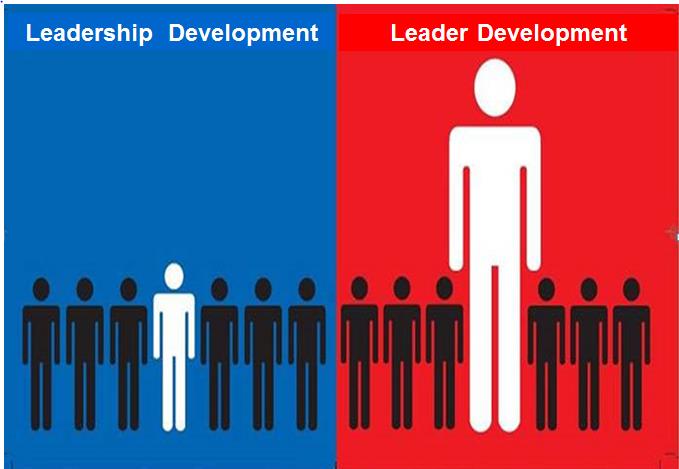
The distinction between ‘leader’ and ‘leadership’ development is much more than just semantics.
The confusion between the two matters because this is a main contributor to the failure of many so-called ‘leadership development’ initiatives.
A substantial body of research indicates that leadership development determines organisational performance and success (e.g. Charan, Drotter & Noel, 2001). Regrettably, by confusing the practices of leader development and leadership development, many organisations (and practitioners), continue to develop leaders without building real leadership capacity.
The widely accepted view that links leaders, followers and shared goals is increasingly obsolete and less useful. In contemporary contexts, where teamwork and collaborative relationships are increasingly required to achieve performance outcomes and business results, approaches such as the DAT (direction, alignment and commitment) triad, (Making Leadership Happen by CCL, McCauley, 2014, p. 1) are becoming more accepted and useful.
What do all these differences really mean?
The differences between the practices of leader development and leadership development are reflected in the differences in each of the following three areas:
- Goals, objectives, outcomes and results;
- Assumptions and areas of concern; and
- Methods (processes, strategies and interventions) and practitioners’ knowledge and skills.
1. Goals, objectives, outcomes and results
Leader development is only one aspect of leadership development (a much larger, deeper and expansive process). It focuses on developing an individual’s knowledge, skills, and abilities (also referred to as human capital). This practice is driven by the achievement of personal goals and, when successful, yields individual progress, outcomes and results.
In contrast, leadership development focuses on building networked relationships (social capital) and wider team/organisational leadership capacity, as well as strengthening engagement and shaping culture. It is driven by collective goals. Consequently, when successful, it yields collective outcomes and results.
2. Assumptions and areas of concern
Leader development assumes that effective leadership happens by developing individuals or so called ‘leaders’ (e.g. individual contributors, managers, executives). From this perspective, leader development is concerned with developing the ‘intra-personal’ domain and skills (e.g. self-awareness, self-regulation, and self-motivation) of individuals.
Leader development further assumes that the greater the level of personal/adult development and/or psychological stability individual reach, the better leaders they will become. This is not necessarily the case. It is now well-known that great leaders such Abraham Lincoln and Winston Churchill suffered from depression and bipolar disorder respectively. In fact, I would argue that a certain degree of deviance or eccentricity can be a great source of creativity and drive to change the status who – which is what leadership is all about.
On the other hand, leadership development assumes that leadership is a relationship (a social or collective phenomenon that is rooted in developing trusting relationships). Hence, leadership development relates to the ‘inter-personal’ domain or skills (e.g. social awareness and social skills) required to build and maintain such type of relationships.
As result, leadership development is more concerned with the nature of the ‘reciprocal obligations’, promises or commitments individuals have with each other, and which relate to the achievement of collective goals and are built on a foundation of mutual trust and respect (the enactment of leadership).
Different, yet complementary
Its follows from the above, that while leader and leadership development are distinctly different practices, they are not mutually exclusive. In fact, they are complementary. Leader development is the precursor and foundation of leadership development. The risk is that many practitioners (and organisations) mistakenly assume that leader development is the same as leadership development and that it leads to the same outcomes and results.
The best way to recognise these two different practices in action is by looking at the methods (strategies, processes and interventions) used by practitioners.
3. Methods (strategies, processes and interventions)
From a more practical perspective, the strategies and interventions used by practitioners are good indicators of at what level of development they are working on. The knowledge and skills practitioners require for working at each of these two levels are also different.
Leader development typically uses the following tools, processes or strategies:
- Assessment tools that focus on competencies, individual/adult development; personality or other types of psychometric assessment (e.g. attitudes, values);
- Multisource or 360 degree feedback assessment;
- One-to-one coaching;
Mentoring.Most coaching approaches tend to rely on the exchange of information (narratives) between client and practitioner/coach without any direct observations of behaviours as part of the coaching approach. In coaching (as in mentoring), the unit of attention and measurement is the individual.
Knowledge and skills required by practitioners working at this level:
- Knowledge of and accreditation in using the psychometric assessment tools of choice;
- Coaching and mentoring skills.
Leadership development uses a very different and richer set of processes or practices in addition to coaching. Some examples include:
- Group work (facilitation and training);
- Group simulations and games;
- Team coaching;
- Development Centres;
- Open Space Technology (OST);
- ‘Case in point’ methodology;
- Action methods such as sociodrama and sociometry;
- Assessment of culture and engagement.
Most of these methods rely on the direct observations of interactions of groups/teams while working together on real-time work challenges or projects. The unit of attention and measurement is a collective entity (group, team, organisation or community).
Knowledge and skills required by practitioners working in this domain:
- Knowledge of group dynamics and adult learning principles;
- High level of facilitation skills;
- Awareness and knowledge of social systems theory;
- Knowledge of and skills in using action methods;
- Knowledge of game theory;
- Knowledge of and experience in using the method of choice;
- Knowledge of and accreditations in using culture and engagement assessment tools of choice.
Conclusion
Leader and leadership development are different, yet they complement each other. Leader development is only the foundation for leadership development. Leader development is driven by personal goals, uses coaching as the main method and yields individual outcomes and results. This practice does not necessarily build leadership capacity in organisations. In contrast, leadership development is driven by collective goals, requires shared meaning with others, uses a wide range of methods, and generates collective outcomes and results. Both practices use different processes and require different sets of practitioner’s knowledge and skills.
=================================================================
Sebastian Salicru (Business Psychologist) | Leadership Development Expert, Executive Coach, Facilitator, Researcher and Author | sss@pts.net.au | www.pts.net.au
Follow Sebastian on LinkedIn
Connect with Sebastian on LinkedIn
Visit the PTS Website


